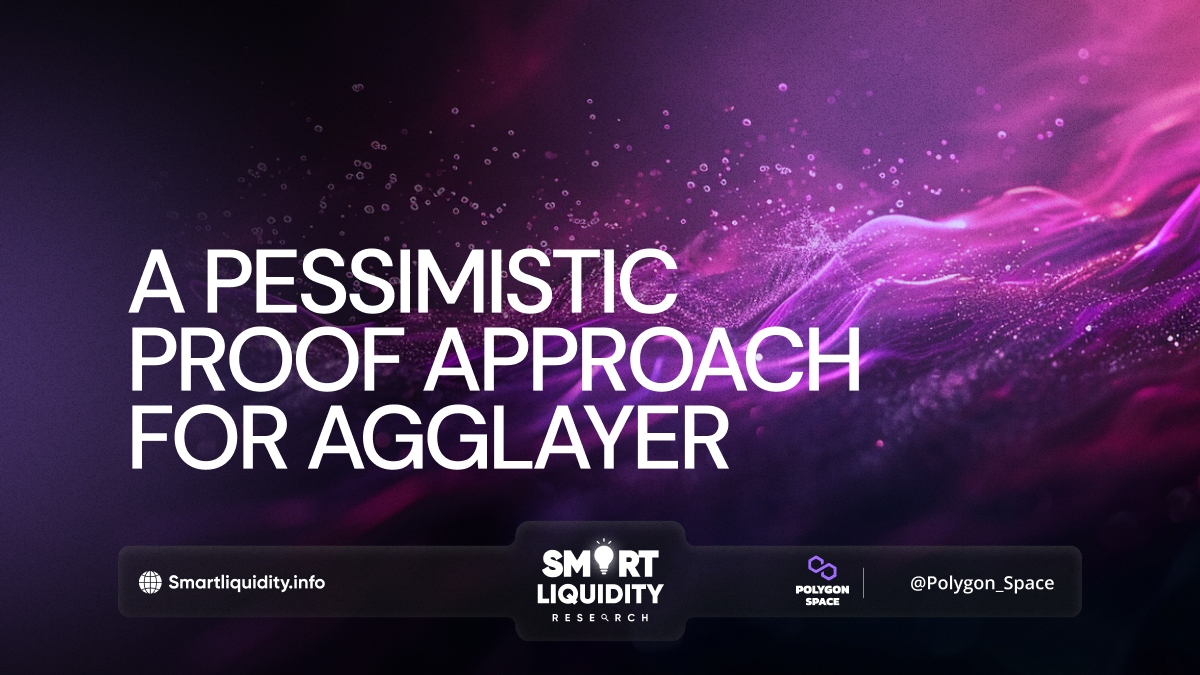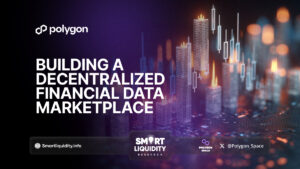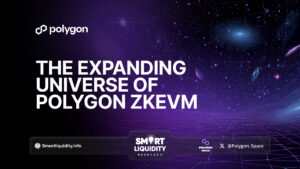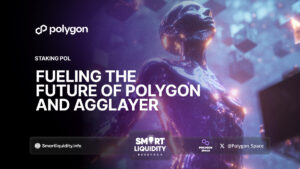A Pessimistic Proof Approach for AggLayer on Polygon Blockchain


The dynamic realm of blockchain technology is consistently evolving, driven by the need for enhanced security, scalability, and efficiency. In this context, the Polygon blockchain stands out with its cutting-edge solutions tailored for the Ethereum ecosystem. One notable innovation is the “Pessimistic Proof Approach for AggLayer,” a sophisticated concept designed to bolster the security and reliability of decentralized applications (dApps) operating on Polygon. This method’s significance and potential impact on the Polygon ecosystem warrant a closer examination.
Understanding Pessimistic Proof
The “pessimistic proof” approach diverges from traditional optimistic methods by adopting a more cautious stance. Instead of presuming the validity of transactions until proven otherwise, this approach assumes that any transaction could be fraudulent or invalid from the outset. This mindset necessitates rigorous verification of each transaction before it is processed. The thorough scrutiny involved in the pessimistic proof method aims to mitigate risks and ensure the integrity of the blockchain, providing a robust foundation for decentralized operations.
The Role of AggLayer on Polygon
AggLayer, or Aggregation Layer, plays a pivotal role in optimizing blockchain transactions. On the Polygon blockchain, the AggLayer aggregates multiple transactions and proofs, streamlining the process before they are committed to the main chain. This aggregation mechanism alleviates the load on the main chain, significantly enhancing scalability and transaction throughput. By integrating a pessimistic proof approach within the AggLayer, Polygon ensures that every batch of aggregated transactions is meticulously verified. This integration not only fortifies security but also builds greater trust among users and developers by guaranteeing that only valid transactions are processed.
Benefits of the Pessimistic Proof Approach on Polygon
The benefits of the pessimistic proof approach on Polygon are manifold. Firstly, it provides enhanced security, a primary concern in the blockchain ecosystem. By thoroughly verifying each transaction, the approach minimizes the risk of fraudulent or malicious activities. Secondly, the increased trust it fosters among users and developers is invaluable. Knowing that transactions are rigorously vetted before processing instills confidence in the network’s reliability. Thirdly, despite the intensive verification process, the use of AggLayer maintains high scalability on Polygon. The network can handle larger transaction volumes without compromising on security, thanks to the efficient aggregation of transactions. Lastly, the combination of pessimistic proof and AggLayer contributes to a more robust and resilient ecosystem, capable of supporting a wide range of dApps and use cases.
Challenges and Considerations
Despite its advantages, the implementation of a pessimistic proof approach on Polygon is not without challenges. The meticulous verification process can be resource-intensive, demanding significant computational power and time, which could potentially slow down transaction processing. Additionally, the increased scrutiny of transactions might lead to higher latency, affecting the speed at which transactions are confirmed. Furthermore, the complexity involved in setting up and maintaining such a system requires advanced technical expertise and robust infrastructure, posing a potential barrier to widespread adoption.
Potential Impact on the Polygon Ecosystem
The adoption of a pessimistic proof approach for AggLayer on the Polygon blockchain could have profound implications. Enhanced dApp development is a likely outcome, as developers might be more inclined to build on Polygon, attracted by the network’s enhanced security and trustworthiness. Improved security and reliability can lead to higher user adoption, as individuals and businesses seek more secure blockchain platforms for their transactions. With a more secure and scalable platform, Polygon is well-positioned to drive further innovation and growth within the blockchain space, paving the way for more sophisticated and secure decentralized applications.
Conclusion
In conclusion, the integration of a Pessimistic Proof Approach for AggLayer on the Polygon blockchain represents a significant advancement in blockchain technology. While the approach presents certain challenges, its potential to create a more robust and reliable ecosystem is substantial. As Polygon continues to innovate and refine its technologies, such approaches will play a crucial role in shaping the future of decentralized applications and the broader blockchain industry. By prioritizing security without compromising on efficiency, Polygon demonstrates its commitment to providing a secure and scalable platform for the next generation of blockchain applications, ensuring its place at the forefront of the blockchain revolution.
DISCLAIMER:
“The information provided on this platform is for general informational purposes only. All information on the platform is provided in good faith; however, we make no representation or warranty of any kind, express or implied, regarding the accuracy, adequacy, validity, reliability, availability, or completeness of any information on the platform.”




